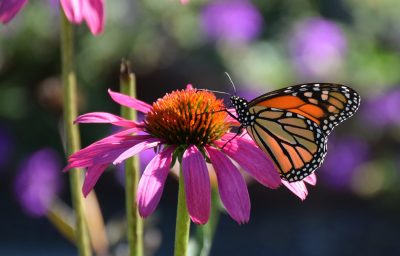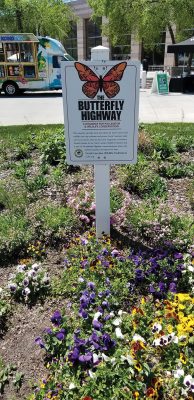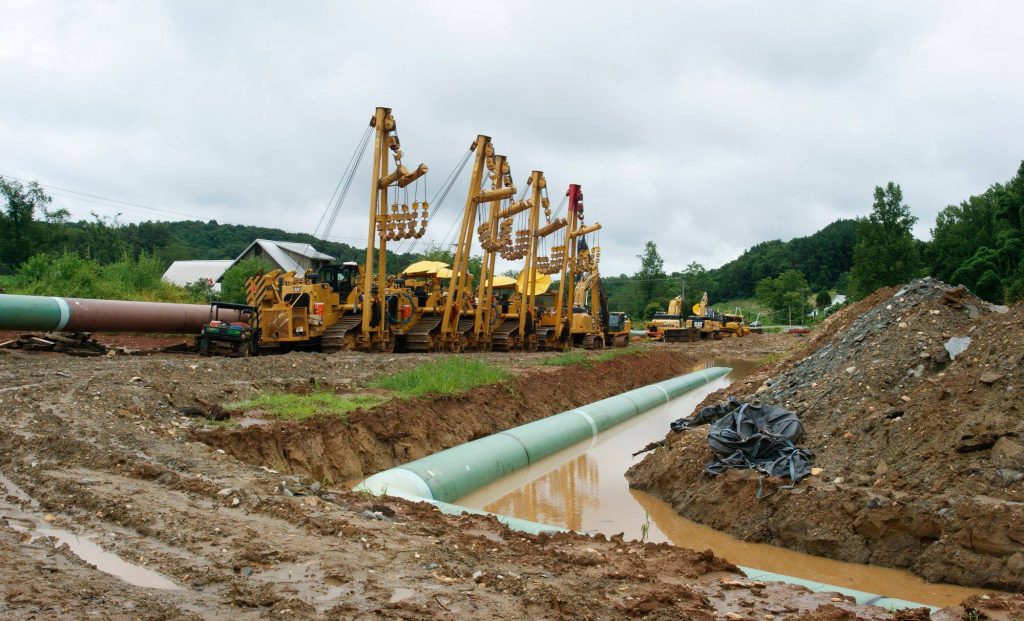A Backyard Pollinator Paradise
By Ashley Goodman

Native flowers like Echinacea purpurea are critical resources for butterflies and other pollinators. Photo by Angel Hjarding/NCWF
You have just planted azaleas in your garden, and already miner bees are whirring about the pink blossoms. They have started making homes in dead logs around your garden, bringing life to the yard. A blossoming garden isn’t just beautiful — it’s also a valuable resource for native pollinators.
A garden composed of native, pollen-rich plants is a safe haven for bees, butterflies, hummingbirds and other flower-loving creatures. This can be as simple as a few flowers or a more complex habitat that functions like a small village, offering food, water and shelter. No matter your space and budget, starting a pollinator garden is a great way to invite native pollinators to your yard.
Start by selecting a diverse range of native plants, each with different blooming seasons, colors and shapes to appeal to a variety of pollinators. The Pollinator Partnership, a nonprofit pollinator conservation group, suggests planting flowers in clusters to create “targets” for visitors.
Most pollinators prefer flowers with bright colors: hummingbirds and butterflies prefer vibrant reds, and bees prefer yellows and blues, according to the group.
In North Carolina, Caldwell County Beekeepers Association Vice President Tracey Carriker has been beekeeping for six years, and her father kept bees for 30 years. Carriker gardens with pollen-rich plants to ensure her honeybees get the nutrients they need.
According to Carriker, as seasons go by she notes which plants her bees prefer to determine what to buy next year; some of her bees’ favorites include bee balm, lavender and tulip poplars.
“Every year, I try to add more pollinator plants to my property,” Carriker says. “I know plants I like, and I keep lists of plants the bees like.”
Some native pollinators have physiologically evolved to fertilize native plants, according to the North American Pollinator Protection Campaign. Beetles, for example, were some of the first insects to visit flowers. As a result, ancient plants like magnolia are pollinated solely by beetles.
Native plants are adapted to the climate, soil and pollinators they co-evolved with. They also require less water and are better equipped against native pests than non-native species, making them good choices for gardeners seeking hardy, low-maintenance plants.
In urban residential areas, homogenous lawns and shrubs lead to fewer native plants, according to Carriker.
“Pollinating insects need variety. That’s why it’s really important to research your area and see what good pollinator plants [there] are to plant those for bees,” says Carriker.
Pollinator-Friendly Yard Maintenance
Once you have planted your garden, there are a few other ways to make your yard a pollinator oasis.
Nearby trees and shrubs can block wind, offer areas for pollinators to roost and hide from predators, and sometimes serve as host plants for caterpillars.
Make sure your garden still has adequate access to sunlight. Since butterflies are cold-blooded, the North American Butterfly Association suggests placing your garden where it will receive at least six hours of sunlight a day.
Butterflies also require shallow puddles or moist soil. Puddling areas allow butterflies to soak up water, salts and nutrients.
Mud can also provide home-building material for ground-nesting bees and wasps, while logs offer nesting space for some species, like carpenter, leafcutter and mason bees.
As you maintain your garden, avoid pesticides and herbicides, which can negatively impact pollinator health. Don’t be afraid of a few weeds — they can be homes for young pollinators.
Many caterpillars depend entirely upon specific host plants like milkweed. Weeds like thistle, clover and dandelion can also benefit pollinators when more nectar-rich flowers, such as azaleas, aren’t in bloom, according to the West Virginia Pollinator Handbook.
Mowing and weed-eating can eliminate those food sources, destroy eggs and larvae, and damage ground-nesting insects’ homes. The West Virginia Pollinator Handbook suggests avoiding mowing when flowers are in bloom and to only mow one-third of the lawn at a time.

Aster, iris, cardinal flower, bee balm and butterfly milkweed are among the flowers that The Butterfly Highway, a program of the N.C. Wildlife Federation, recommends for the mountains. Photo by Angel Hjarding/NCWF
Herbicides and pesticides can also pose a threat to pollinators. Glyphosate, the main ingredient in the popular herbicide Roundup, destroys milkweed, the monarch caterpillar’s primary food source. This is contributing to the monarch butterfly’s decline, according to a 2012 study in the journal Insect Conservation and Diversity.
While some poisons warn about risks posed to honeybees, combinations of multiple chemicals can have unforeseen effects, and the risks to native bees often go unmentioned. According to the West Virginia Pollinator Handbook, native bees can actually be more susceptible to health risks related to pesticide and herbicide use than honeybees. (Read more about the impact these chemicals have on pollinators here.)
If pesticides are necessary, apply to plants directly to avoid drift, and don’t apply while plants are in bloom. Early morning or night application can prevent drift, as wind velocity is typically lower. Nighttime application, when bees are not foraging, can also limit bee mortality, according to the West Virginia Pollinator Handbook.
Introducing native plants to the area can provide habitats for insects that help control pests and weeds naturally.
Some herbs also drive away unwanted insects. Lavender, which attracts bees, simultaneously repels bugs like flies and mosquitoes. Other pest-repelling plants include basil and chrysanthemum.
Garden Networking
Once your garden is accepting visitors, there are many opportunities to help the pollinator community at large.
The Butterfly Highway, a North Carolina Wildlife Federation project, allows gardeners to register their gardens as points along the “highway” and collect data on visiting pollinators to help track the insects’ habits and migration patterns.
Though most of the highway’s 1,700-plus gardens are in North Carolina, pollinator-friendly spaces have also been registered in Virginia, South Carolina and Tennessee. To join the Butterfly Highway, visit ncwf.org/butterfly-highway.
On a larger scale, the National Pollinator Garden Network’s Million Pollinator Garden Challenge connects 695,190 pollinator gardens across the United States and into Canada.
The Million Pollinator Garden Challenge partners with individuals and organizations to track pollinators’ progress and growth regionally, and uses the data to pinpoint areas of greatest need for future gardens. View a map of registered pollinator places at pollinator.org/mpgcmap.
The map displays a range of oases for pollinators nationwide, though there are still many gaps across Appalachia. But each backyard that hosts colorful flowers like bee balm, lavender and azaleas will help sustain another generation of bees, butterflies, hummingbirds and more — as well as the vibrant ecosystem that depends on them.
Remarkable Pollinators
Related Articles
Latest News

Leave a comment
Your email address will not be published. Required fields are marked *





